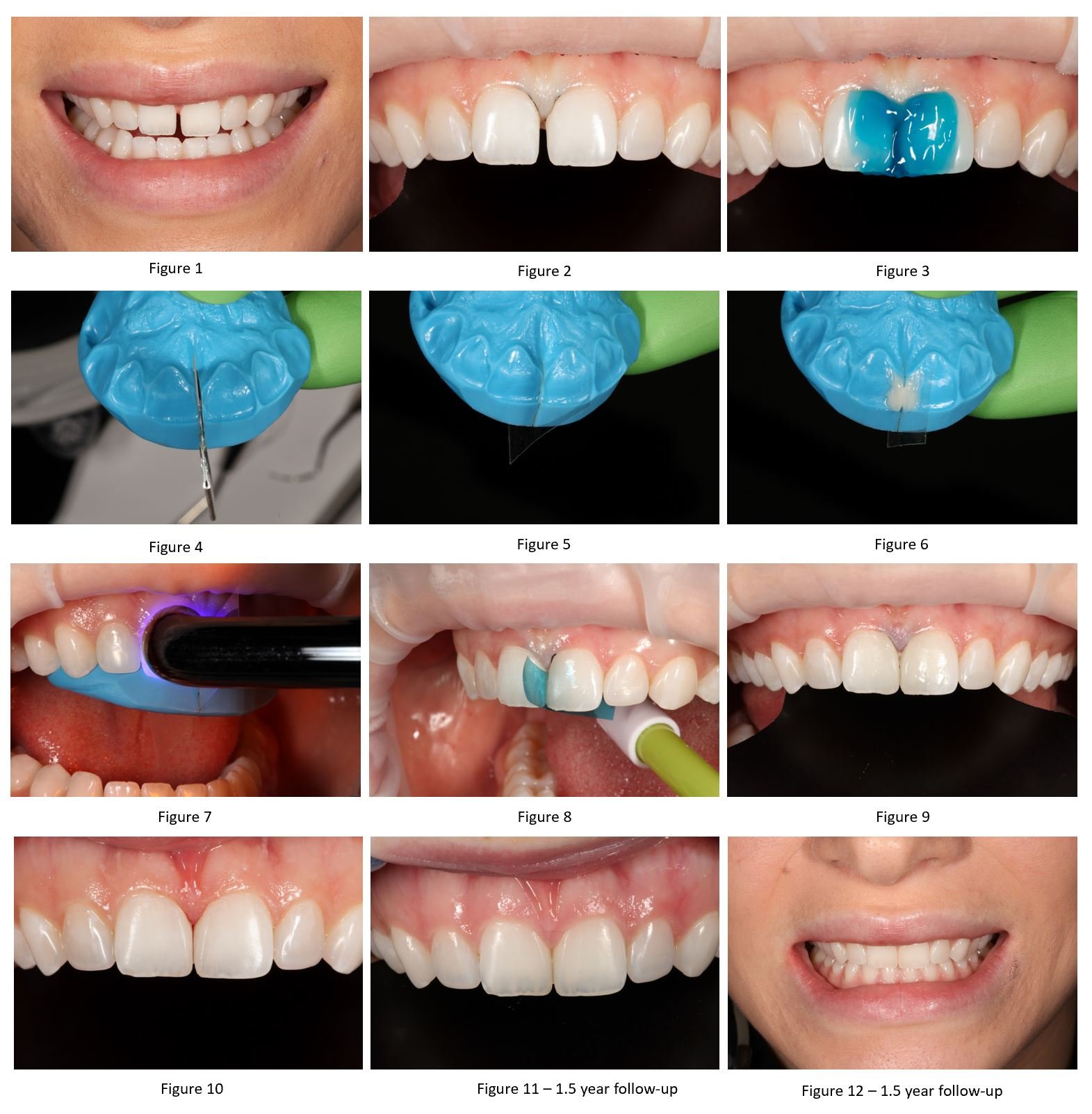Written By: Dr. Kevin Brown, Bellevue, WA, & Michelle Chan
Technique Article:
Silicone Putty Indexes for Seamless, Flawless Results: Part I
Case #1 - Diastema Closure
Tokuyama’s OMNICHROMA and OMNICHROMA Blocker have been a wonderful addition to my daily restorative armamentarium and made it much easier to predictably place direct composite restorations in all areas of the mouth. In this article I would like to share techniques that have simplified how I restore diastemas.
Case #1
In this case, the patient had orthodontics in her youth and over the years stopped wearing her retainer and a diastema developed between teeth 8 and 9 [Figure 1]. She elected not to do Invisalign to close the space and instead do direct composite bonding. The patient asked if she were to whiten her teeth later on would the composite still match? I let her know that the new composite that I was going to use on her will always match the color of her teeth, even if they darken over time, or if she whitens later on. With a standard composite, a shade is selected that matches closest to the existing tooth structure and it won’t change over time. So having the ability to place a direct restoration and know that it will still blend in seamlessly over the years is very comforting.
Tooth preparation consisted of using a prophy cup polisher and pumice to remove any surface plaque. Gingival retraction cord was then gently positioned along the mesial aspect of the central incisors and air abrasion (Microetcher II, Danville) was then used to microetch the enamel where the composite will be added [Figure 2]. Isolation is important so the Optragate retractor (Ivoclar Vivadent) was used to keep the lips out of the way and provide better visibility. Phosphoric acid etch was then placed for 15 seconds and rinsed with water [Figure 3]. Notice that the air abrasion and the acid etch was placed well beyond the estimated final margin which will allow for a seamless margin when finishing and polishing the composite. Bonding resin (Tokuyama Universal Bond, Tokuyama Dental America) was then applied and air dried [Figure 4].
In this case a diagnostic wax up and silicone putty index was fabricated to help guide the layering process and make it more predictable for composite adaptation and establishing the midline. A straight razor blade was used to cut down the midline of the putty index which will allow a clear mylar strip to fit [Figures 4-5]. With the Mylar in place within the putty index, OMNICHROMA was then applied to the mesial aspect of teeth 8 and 9 on the putty and up against the mylar [Figure 6]. The putty index was then placed into position in the patients mouth and pressure applied to seat it fully and excess composite was expressed facially through the diastema and removed with an IPC instrument (IPC, Cosmedent Inc). Once the excess composite was removed and the mylar was centered for the midline establishment, the composite was light cured [Figure 7]. To complete the restoration a contoured mylar strip (Garrison Dental) was used individually on tooth 8 and then 9 with a final layer of OMNICHROMA [Figure 8]. This is how it looked after the final layer of composite was placed [Figure 9]. Finishing and polishing was accomplished with Soflex disks (3M ESPE), fine diamond and carbide burs (Komet USA), and composite polishers (Komet). To refine the mesio-gingival adaptation of the composite a fine grit IPR strip (Komet) and a surgical 12 blade were used. The following photos show the immediate post op vs 1.5 year follow up [Figures 10-12].

I chose to share this first case for a couple of reasons. First, to demonstrate a few helpful techniques that can be used with any kind of composite, using one shade or multiple shades. The technique of using a silicone putty index increases predictability for placing direct composite in the anterior segment in a variety of applications while decreasing the time it takes to complete the same procedure without an index. Second, to illustrate how well OMNICHROMA works in a variety of procedures on different colored teeth with and without the use of the supplemental blocker. I love to share what I have learned and hope that these tips and techniques will help others in their daily practice.
